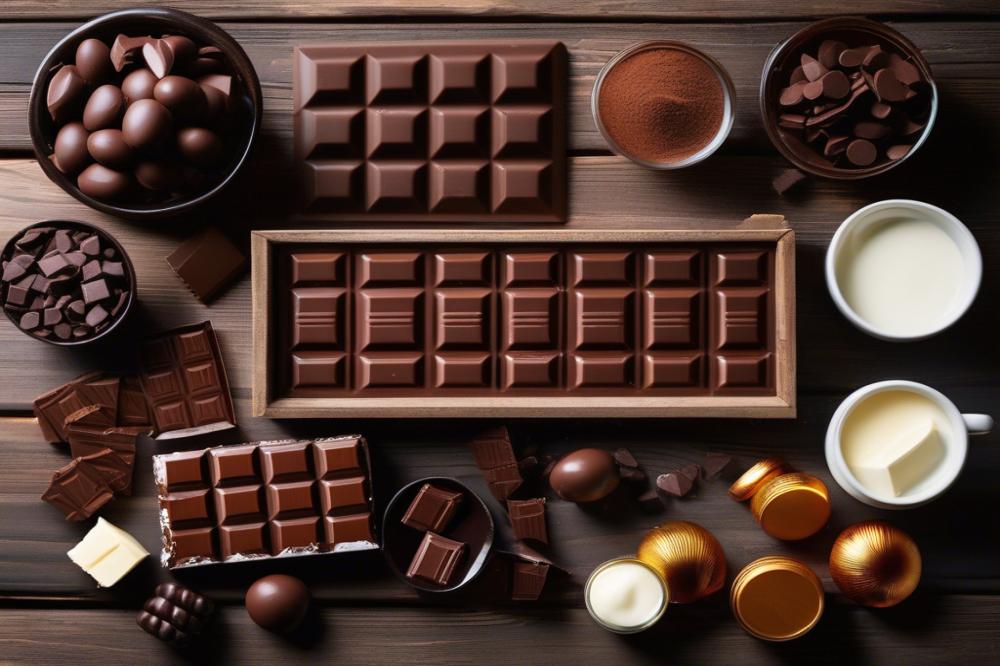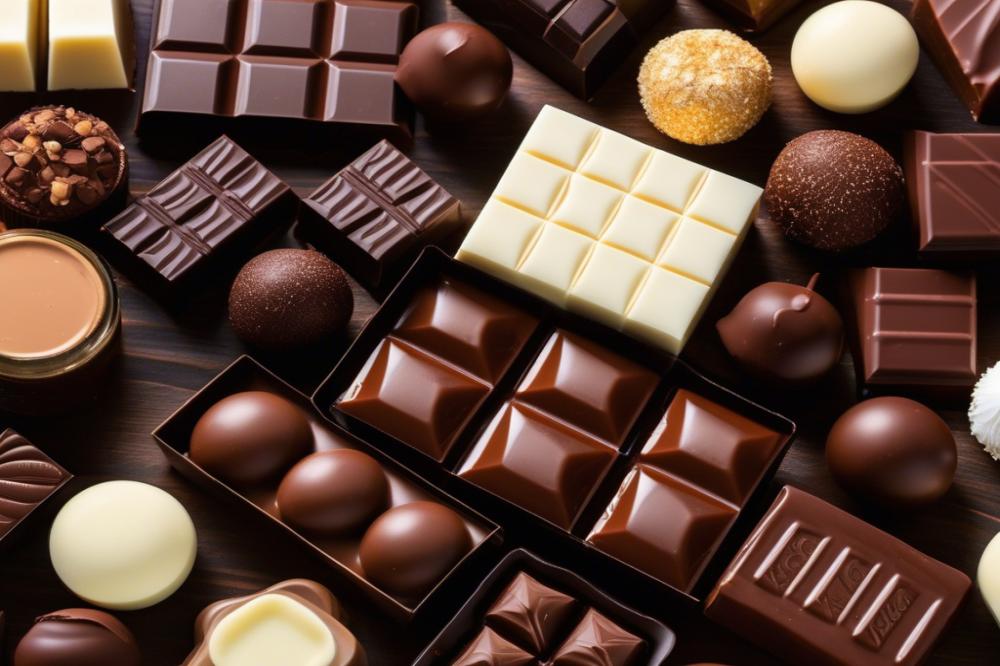Introduction
The chocolate industry is one of the most beloved sectors in the world. Millions enjoy chocolate every day. This sweet treat is more than just a snack; it represents a global market valued in the billions. From farmers to manufacturers, many people depend on it for their livelihoods.
Technological advancements play a crucial role in shaping this industry. New methods and tools not only help in creating better products but also streamline various processes. automation in chocolate manufacturing has made production faster. Equipment can now handle tasks that were once manual, reducing labor costs and minimizing human error.
Fermentation and roasting are vital steps in cocoa processing. These techniques influence the flavor profiles of chocolate beans. Enhanced machinery allows for precise control over these processes. As a result, companies can produce consistent flavors that consumers expect.
Quality control has also improved thanks to modern technology. Companies now use data analytics to monitor every stage of production. This data provides insights that help identify problems early. By addressing issues promptly, they can maintain high standards for their products.
Moreover, the supply chain has benefited significantly from innovations in packaging technology. Efficient packaging not only preserves quality but also caters to consumer preferences. Sustainability is another growing concern. Many chocolate producers are now focused on reducing their environmental impact. This shift requires employing eco-friendly practices throughout the production process.
Flavor development remains a key area of interest. From introducing new varieties to adjusting recipes, technology fosters creativity in chocolate production technology. Overall, integrating advanced methods significantly enhances the chocolate industry, making it more efficient, sustainable, and enjoyable for everyone.
Advancements in chocolate production technology

Overview of Current Technologies in Use
Chocolate production has come a long way from traditional methods. Modern techniques vary and have transformed how chocolate is made. One notable method involves fermentation, which enhances the flavor of cacao beans. Roasting is another critical step, and different machines have been developed to control temperature and time, optimizing taste and texture. Innovations in quality control are also significant. Sensors and scanning technologies help ensure that only the best beans make it to the production line. Supply chain improvements have been aided by software solutions that track ingredients from farm to factory.
Impact of automation on Production Efficiency
Automation plays a vital role in the efficiency of chocolate production. Automated machines can mix, pour, and mold chocolates faster than manual laborers. Workers can focus on more complex tasks while machines handle repetitive processes. This shift not only speeds up production but also reduces errors, resulting in consistent quality. Automated systems can adjust processes in real-time for optimal results, like tweaking temperatures during roasting. Efficiency gains have opened up the industry to larger-scale operations without sacrificing flavor.
Role of Machinery in Scaling Production
Scaling production has become more achievable due to advanced machinery. Large-scale factories now rely on specialized equipment for every step, from grinding cacao nibs to packaging the final product. Each machine is designed to perform tasks with precision and speed. Upgraded packaging technology allows chocolate to stay fresh longer while being shipped worldwide. Data analytics further enhances operations by helping manufacturers understand trends and consumer preferences. This information can drive flavor development initiatives, leading to new and exciting products that cater to evolving tastes. Sustainability also benefits from machinery that reduces waste and energy consumption during production.
Fermentation and Roasting Innovations

Fermentation plays a crucial role in chocolate production, particularly in flavor development. This step works by transforming the sugars found in cocoa beans into acids and alcohol through microbial activity. It creates a variety of flavors, which contributes to the richness of the final product. fermentation can vary based on factors like humidity, temperature, and the duration of the process. Each region’s approach results in distinctive tastes.
Recent advancements in technology have changed fermentation practices significantly. Automation is now used to monitor the fermentation environment closely. With data analytics, producers can maintain optimal conditions. This helps to produce more consistent flavor profiles and enhances the overall quality of the chocolate.
Technological Advancements in Roasting Processes
Roasting is another critical stage in chocolate production. It brings out the beans’ rich flavors and develops the aroma. Traditional roasting methods vary, but technology has offered innovative solutions. New machinery allows for precise temperature control during roasting. This ensures beans are roasted evenly, preventing any burnt or underdeveloped flavors. Manufacturers increasingly rely on sophisticated roasting equipment that adapts to different types of cocoa.
Quality control measures have become essential in both fermentation and roasting. These innovations in technology often streamline the entire supply chain. Producers can now track each batch of chocolate meticulously. This improvement in traceability allows for greater accountability and product consistency. The impact on overall chocolate quality is profound. Chocolatiers can produce high-quality products that satisfy consumer expectations.
Sustainability and Flavor Development
Modern innovations also focus on sustainability. Machinery utilizes energy-efficient processes, and eco-friendly practices are becoming standard in the industry. Sustainable operations not only benefit the environment but can also enhance flavor development. For instance, beans from well-cared-for farms tend to offer richer flavors. As producers embrace these techniques, they contribute to a healthier planet while creating superior chocolate products.
Packaging technology has also evolved, ensuring that the quality of chocolate remains intact during transport. Maintaining flavors is vital, particularly for premium products. Innovative materials help preserve freshness, ensuring that consumers enjoy the intended taste. As a result, the combination of fermentation, roasting, and modern technology culminates in a quality chocolate experience.
Quality Control and Data Analytics

Technologies for Monitoring Quality at Various Stages
In chocolate production, quality control is vital. Specific technologies help monitor the quality of cocoa beans right from harvesting. Sensors can evaluate the moisture content during fermentation. This helps producers understand when to stop the process. Machinery is equipped with cameras that check for defects in the beans. Advanced machines analyze color variations in chocolate during roasting. Changes in color can indicate issues with the roasting process. Automated systems ensure that every batch meets set standards. The aim is to maintain consistency throughout production.
Use of Data Analytics for Improving Production Efficiency
Data analytics plays a significant role in production. By analyzing data, companies can pinpoint where inefficiencies arise. For example, tracking energy usage during roasting can reveal potential savings. Patterns in the supply chain can be identified to enhance delivery times. This technology helps manufacturers adjust processes based on real-time data. Flavor development benefits from these insights, allowing for better recipes. When manufacturers know what works, innovations become easier. Using predictive analytics, companies can forecast demand more accurately. Better forecasts mean less waste and increased sustainability.
Case Studies of Successful Implementations
Several chocolate producers have embraced these advancements. A notable case involves a company that introduced improved packaging technology. They integrated sensors to monitor freshness and prevent spoilage. This innovation led to reduced waste, benefiting both the environment and profits. Another case focused on a factory that revamped its roasting process. By utilizing data analytics, they optimized cook times. This adjustment resulted in enhanced flavor profiles for their products. It also lowered production costs. These implementations demonstrate the positive impact of tech in chocolate-making. With careful application, chocolate makers can achieve better quality and efficiency.
Supply Chain Enhancements
Role of Technology in Managing the Chocolate Supply Chain
Technology plays a pivotal role in managing the chocolate supply chain. It enhances workflows from farm to factory. Automation makes processes faster and reduces costs. Farmers can utilize smart machinery for harvests. This leads to improved efficiency. Real-time data captures essential metrics, streamlining operations. Advanced software helps manufacturers forecast demands accurately. Supply chain transparency grows with these innovations, allowing companies to respond to market changes swiftly.
Tracking and Traceability Innovations
Innovations in tracking and traceability are reshaping chocolate production. New technologies enable companies to monitor every step, from cacao fields to store shelves. Blockchain technology offers detailed records of sourcing. This means that information about where cacao originates is always available. Consumers increasingly request this information, driving companies to comply. Enhanced traceability assures quality control over fermentation and roasting. It also strengthens the brand’s reputation as buyers ask more about ethical sourcing.
Impact on Sourcing Sustainable Cacao
Sourcing sustainable cacao has become a priority. Technology makes this goal achievable for many producers. Data analytics identifies sustainable farming practices. Growers can receive support and training on better methods. This not only improves yield but also promotes environmental benefits. Additionally, companies focused on sustainability can now share their commitments more transparently. Packaging technology can feature certifications and information about the cacao’s origin. All these factors encourage consumers to choose responsibly sourced chocolate.
Packaging Technology and Sustainability
Overview of Innovations in Chocolate Packaging
Chocolate packaging technology has evolved dramatically in recent years. New methods enhance protection and extend shelf life. For example, automated systems can now seal chocolate in a secure way that keeps flavor intact. Smart machinery tracks environmental conditions during the packaging process. This helps maintain quality control while reducing waste. In addition, data analytics plays a crucial role in optimizing packing efficiency. Companies can now study consumer behavior to create appealing designs. Clear windows in wrappers are becoming popular. They allow customers to see the product before purchasing.
Sustainability Trends in Packaging Materials
Many brands are shifting toward eco-friendly materials in packaging. Biodegradable and compostable options are increasingly available. These materials help reduce the environmental impact of waste. Some companies use recycled paper and plant-based plastics to package their products. This not only attracts environmentally conscious consumers but also meets regulatory standards. Innovative solutions like edible packaging are also emerging. Such advancements represent creative approaches to sustainability in the chocolate supply chain. Brands that prioritize green initiatives often see positive responses from shoppers.
Importance of Consumer Preferences in Packaging Technology
Consumer preferences greatly influence advancements in packaging technology. Many shoppers today look for transparency in product sourcing and packaging methods. They want to know if the materials are safe and sustainable. Therefore, companies must pay attention to these trends to remain competitive. Eye-catching designs and clear labeling significantly impact purchasing decisions. The rise of online shopping has also changed how packaging is viewed. Customers want their products to arrive safely and in good condition. Focusing on these preferences can drive sales and facilitate customer loyalty. Understanding what consumers value in packaging can guide future innovations in the industry.
Future Trends in Chocolate Production Technology
Technological advancements set the stage for chocolate’s future. Automation plays a crucial role in increasing efficiency. Companies are beginning to adopt smart machinery that can perform tasks previously done by humans. This shift leads to more consistent product output.
Emerging Technologies Impacting Flavor Development
New fermentation techniques are changing how flavors develop. By experimenting with different yeast strains, producers can create richer, more complex flavors. Roasting processes have also evolved. Adjusting temperatures and times allows for diverse flavor profiles. Any artisan chocolate maker knows that the right process makes a big difference.
Predictions for the Future of Chocolate Production
The next few years will likely see a surge in data analytics use. Analyzing consumer preferences helps manufacturers tailor their products. Flavors previously forgotten might make a return, driven by consumer interest. Chocolate lovers will discover all sorts of unexpected treats. Sustainability will also become more vital. Companies will need to focus on ethical sourcing to meet market demands.
Role of Technology in Meeting Consumer Demands
Packaging technology is evolving to address consumer concerns. Eco-friendly materials are becoming the norm in the industry. Shoppers are now looking for guilt-free indulgences. Quality control remains a priority as well. Advanced machinery helps maintain high standards. In the supply chain, transparency will become increasingly important. Consumers want to know where their chocolate comes from and how it is made.
The Future of Chocolate Production Technology
Summary of Key Points Discussed
Chocolate production has undergone significant changes due to advances in technology. Innovations like automation have streamlined processes, making them more efficient. Techniques in fermentation have improved the quality of cocoa beans, leading to richer flavors in the finished product. From bean to bar, every step has benefitted from cutting-edge machinery and methods. These advancements also enhance food safety and sustainability, which are increasingly important to consumers.
Reflection on the Importance of Ongoing Innovation
The chocolate industry must continue to embrace new technologies. Without ongoing innovation, it risks falling behind the demands of modern consumers. The landscape is ever-evolving. Staying competitive means leveraging tools that enhance production while minimizing environmental impact. As consumers become more aware of sustainability, companies need to adapt or face challenges. New ideas must be encouraged to shape the industry’s future.
Future Prospects for Chocolate Production
Looking ahead, technology will likely play an even larger role. Emerging trends suggest a focus on personalization in chocolate products. Imagine a world where flavors and ingredients can be tailored to individual tastes, thanks to advanced machines. Additionally, the integration of data analytics can provide insights into consumer preferences. The potential for greater efficiencies remains promising. The next generation of chocolate makers will undoubtedly rely on these tools to create delightful experiences for everyone.



